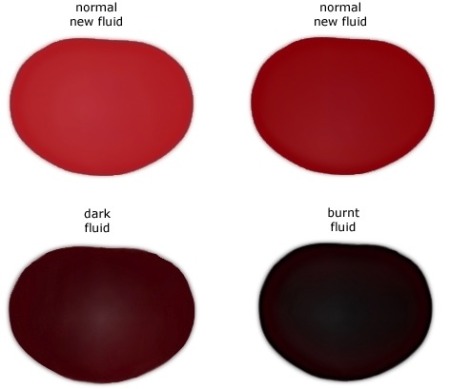Transmission fluid should be a pinkish to red in color, with no visible particles. It should look clear and smell sweet. If the transmission fluid is brown or black, it means there are contaminants from metal shavings inside the transmission that can damage your vehicle’s internal components.
The texture of the transmission fluid should also be smooth and not have any chunks floating around in it. Additionally, if you move the dipstick around, there shouldn’t be any sludge-like material on it either. To ensure your car runs smoothly over time and maximize its lifespan, make sure to check your transmission fluids regularly!
Transmission fluid is a critical component of every vehicle’s transmission system. It helps lubricate the moving parts, ensuring smoother and longer lasting operation. When it comes to what your transmission fluid should look like, you’ll want to keep an eye out for any signs of discoloration or debris.
If it appears dark or has a burned smell, this could indicate that the fluid needs to be changed as soon as possible. Additionally, if you notice pieces of metal shavings in the liquid then you may have a more serious issue with your transmission and should take it into a professional mechanic for inspection right away.
What Does Bad Transmission Fluid Look Like? Good vs Bad
What Color Should Transmission Fluid Be on the Dipstick?
Transmission fluid should be a bright, translucent red color when seen on the dipstick. If the transmission fluid appears to be dark or cloudy in color, it is an indication that it needs to be replaced as soon as possible. Additionally, if there are any metal particles present in the transmission fluid, it can also indicate that there may be a problem with your vehicle’s transmission and professional servicing may need to take place.
What Should Transmission Fluid Look Like on Dipstick?
Transmission fluid should appear a reddish color on the dipstick and have a light, sweet odor. It should also be consistent in texture and not contain any particles or debris which could indicate contamination. The fluid level should be between the “full” and “add” marks on the dipstick to ensure proper operation of your transmission system.
If it appears dark, gritty, or has an overly strong smell it is likely that you need to change your transmission fluid as soon as possible before larger problems arise with your vehicle’s transmission system.
How Do You Know If Transmission Fluid is Bad?
It can be difficult to tell if your transmission fluid is bad without a professional diagnosis. However, there are some common signs that may indicate that it is time for a change. If you notice any issues with shifting gears or delayed response when accelerating, these could be symptoms of low or contaminated transmission fluid.
Additionally, you should always check the color and smell of your transmission fluid; if it has changed colors from its original red hue or starts to smell burnt then this indicates an issue with the fluid itself. Finally, keep an eye out for any leaks coming from the vehicle’s transmission as this could mean that the seals have worn down and need replacing.
What Does Transmission Fluid Look Like When It Needs to Be Changed?
Transmission fluid is typically a bright red, translucent and oily liquid. When it needs to be changed, the fluid may become dark in color, have an unpleasant odor or contain particles that are visible to the eye. It also may thicken and become thicker than normal or start to foam or bubble when shaken.
If any of these signs are present, it is time for a transmission fluid change.

Credit: kellerbros.com
What Does Yellow Transmission Fluid Mean
Yellow transmission fluid indicates an issue with your car’s transmission. The color of the fluid is usually pink or red when it is new and should be changed approximately every 30,000 miles. If you notice that the fluid has turned yellow, this could mean one of several things: there may be a leak in the system; excessive heat can cause the oil to break down which can lead to oxidation; or debris from worn parts inside the transmission could have caused it to change color.
It’s important to get your vehicle inspected as soon as possible if you see yellow transmission fluid so that any potential damage can be addressed quickly before further issues arise.
What Does Transmission Fluid Look Like on the Ground
Transmission fluid typically looks like a bright red, thick liquid when it is poured on the ground. It has a sweet smell and can be slippery to the touch. Be sure to clean up any transmission fluid that spills onto your driveway, as it can damage asphalt surfaces if left unattended for too long.
What Color Should Transmission Fluid Be
Transmission fluid should be a bright, translucent red color. If the transmission fluid is darker than this or has any particles in it, then you need to have your transmission checked out by a professional as soon as possible. Additionally, if the transmission fluid smells burnt or has an unusual odor, it is also important to get your vehicle serviced right away.
Conclusion
Overall, transmission fluid is an important part of your vehicle’s maintenance and should be checked regularly. It should always be a translucent red color with no debris or particles floating in it. If you notice any changes in the way your car shifts gears, strange smells coming from the engine, or if the fluid appears murky or dark brown, then it may indicate that there is something wrong with your transmission and you should seek professional help to get it fixed as soon as possible.
Taking care of your car’s transmission will help keep you safe on the road and extend its life expectancy for years to come.


